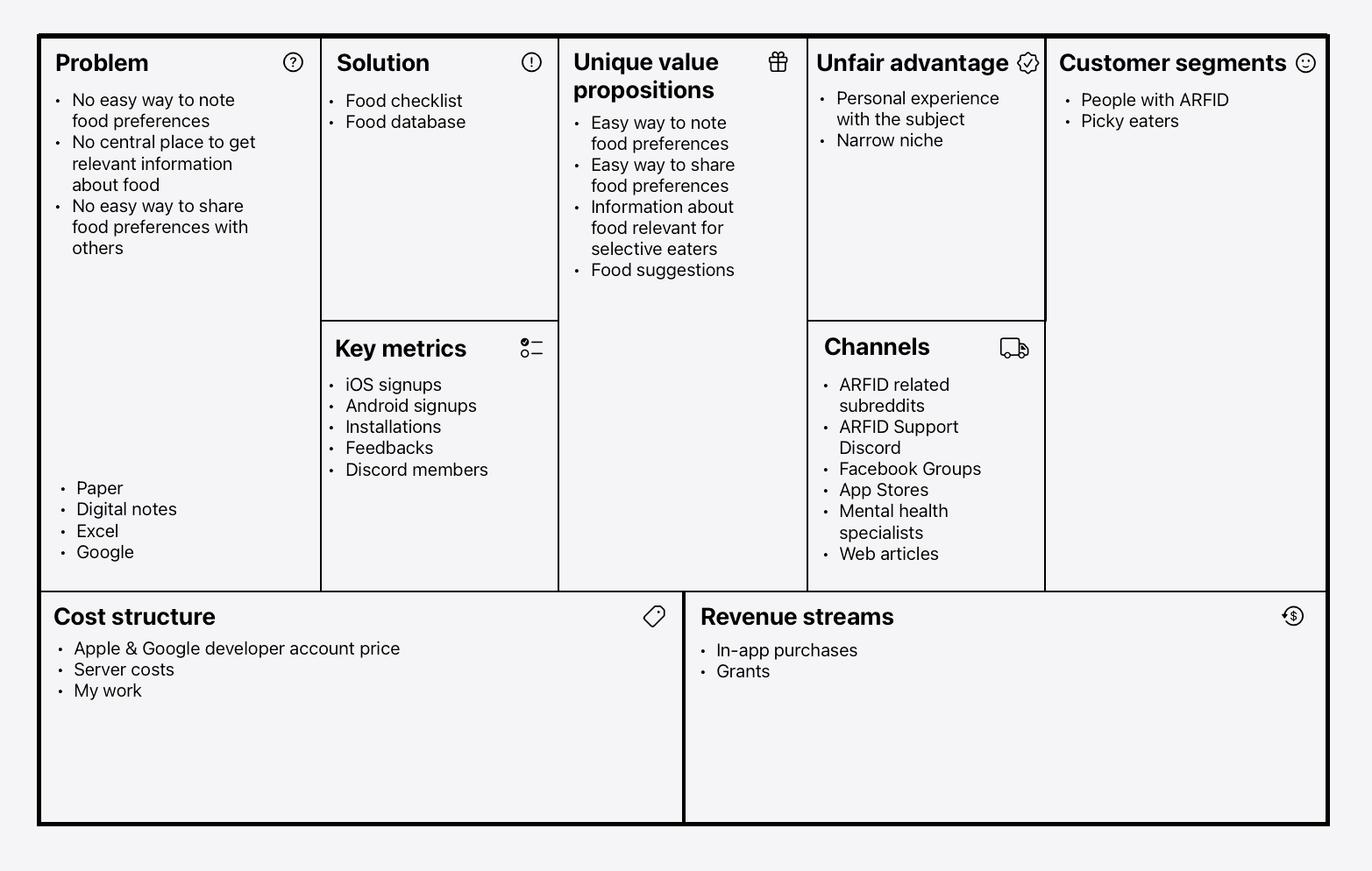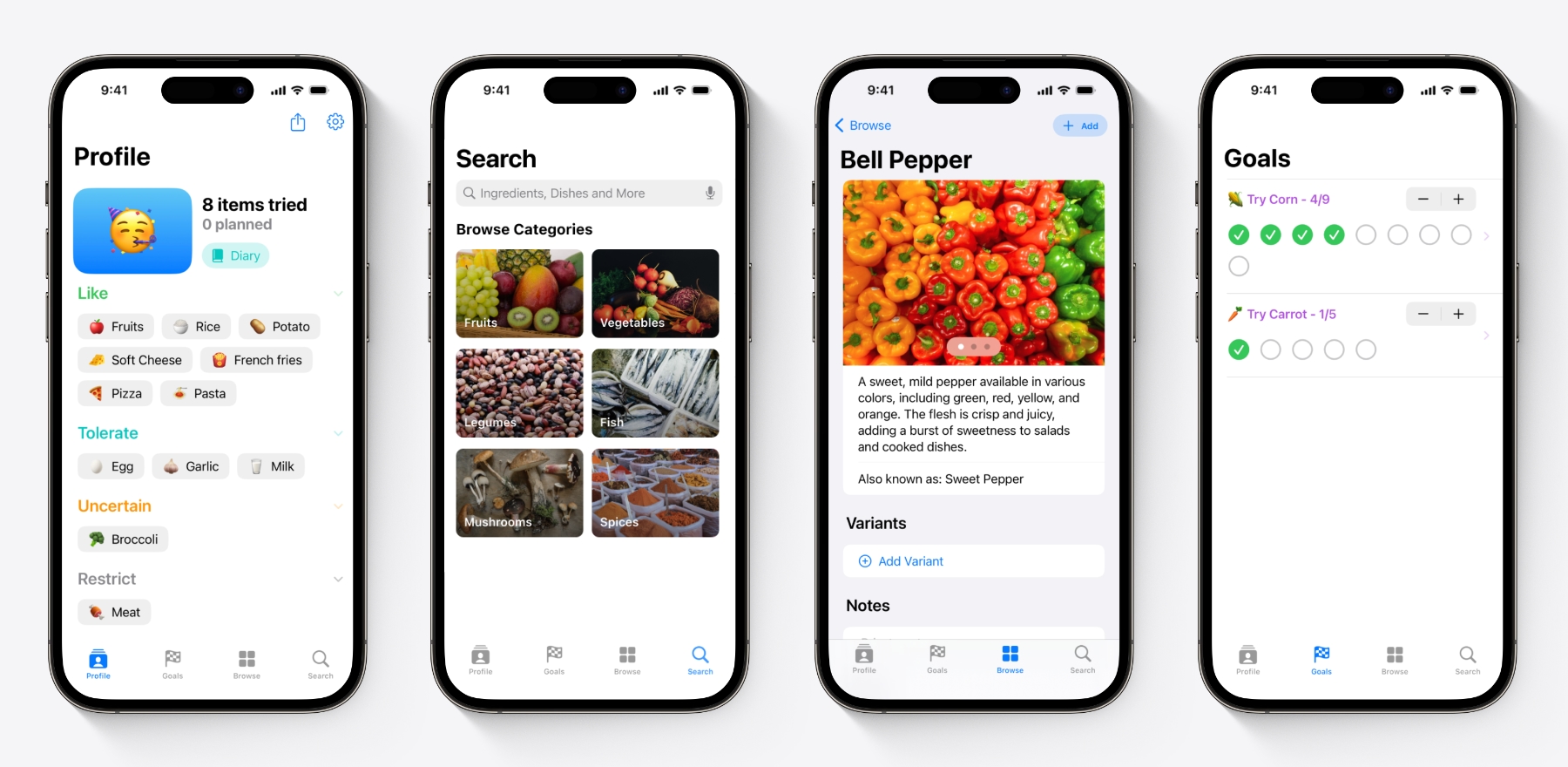Pitaya - Case study

Introduction
ARFID (Avoidant/Restrictive Food Intake Disorder) is a lesser-known eating disorder not linked to concerns about body image or weight. It is mainly characterized by the avoidance of food due to its sensory attributes, including its smell, texture, or taste.
Problem
Those with ARFID often limit themselves to a narrow range of foods, often excluding entire food groups. This makes eating in social settings challenging. Such restrictions can result in nutritional deficiencies, adversely affecting overall health and well-being.
Solution
Pitaya is a mobile app designed to assist people with ARFID and selective eaters. It offers a user-friendly way to define dietary preferences, aiming to reduce food-associated stress. This is achieved via a digital checklist connected to a database.
Persona
- Name: Emily
- Description: Has ARFID - has very limited food preferences, because of that she has a hard time eating in social situations and is often anxious about food.
- Diagnosis: Self diagnosed (~56%)
- Pronouns: She/Her (Most popular)
- Location: USA (~65%)
- Mobile OS: iOS (~55%)
- Made a list of food preferences at some point: Yes (~78%)
- Willing to pay for an ARFID related app: Yes (~66%)
Data based on the ARFIDSupport Discord roles (n=1000+) and my own survey (n=37)
Context
I developed this app because, being someone with ARFID, I searched for such a product but couldn’t find one. With my idea in mind, I participated in a series of workshops in a startup incubator at my university and secured first place in a grant competition. The incubator also paired me with a mentor who guided me throughout the MVP (Minimum Viable Product) creation process.
My Role
I was single-handedly responsible for the initial conceptualization, research, design, development, and user outreach.
This deep involvement not only allowed me to thoroughly understand and address the needs of our target users, but also provided a comprehensive experience in transforming a digital concept into a completed product.
Technologically, I used Swift and SwiftUI to achieve a native iOS appearance and feel, prioritizing a seamless and intuitive user interface. For database creation and management, I utilized the GPT-4 API and Google App Scripts.
Business Model
The current version is fully free to use, it is meant to work as an MVP to validate the market. If there will be enough interest, I plan to add paid features such as a recommendation system.

User Acquisition Strategy
My user acquisition strategy was to reach out to the r/ARFID subreddit and ARFIDSupport Discord channel as well as other ARFID related communities.
During the beta phase, I managed to get 53 contacts, out of which 33 were iOS users. 20 people installed my app, out of which I received 11 actionable feedbacks.
In this process, I learned the importance of momentum - the moment I lost the most contacts was when I waited too long to invite them to try out the app.
Feedback
One invaluable approach I adopted during the testing period was inviting users for a discussion over a call instead of relying solely on written communication. This direct conversation provided me with a deeper insight into their requirements and challenges.
After one such discussion, I introduced an option that allows users to set a goal to try an item more than once, recognizing the significance of repetition in the food tasting journey. However, I was cautious not to push users too aggressively. Thus, I chose a stamp card approach—encouraging repetition without making it obligatory.
I also made it easier for users to add items to the database right away using GPT-4. I found that if they have to wait for an item to be added, they lose interest.


Results in the first week
400+
Downloads
350+
Created lists
100+
Lists with over 50 items
150+
Android waitlist signups
Testimonials
 u/laurenj2210
u/laurenj2210 u/samante81
u/samante81 u/weirdsituati0n
u/weirdsituati0n u/NationalNecessary120
u/NationalNecessary120 u/kush_faerie
u/kush_faerie u/SuperNarwhal36-5
u/SuperNarwhal36-5What I Learned
- Momentum is crucial. People lose interest if you don’t keep them engaged.
- When working alone, it’s much easier to procrastinate and delay tasks. Having clear deadlines, a defined scope, and someone to hold you accountable is very valuable.
- Direct calls with users are more valuable than just written communication. It is crucial for early validation.
- When creating a product, it’s important to think about outreach channels and the core value you’re offering from the start.
- The most important thing is to keep moving forward, regardless of the speed and setbacks.
Future Plans
Continuing this project I want to make general improvements, continuing to listen to user feedback. One of features I intend to enhance is the diary function. I want users to have the option to track all their progress, not just new food experiences. A lot of people have also expressed interest in an Android version - I’ll focus on this once the iOS version is more polished. Lastly, if there’s sufficient interest, I’ll introduce a paid recommendation system.
See the result